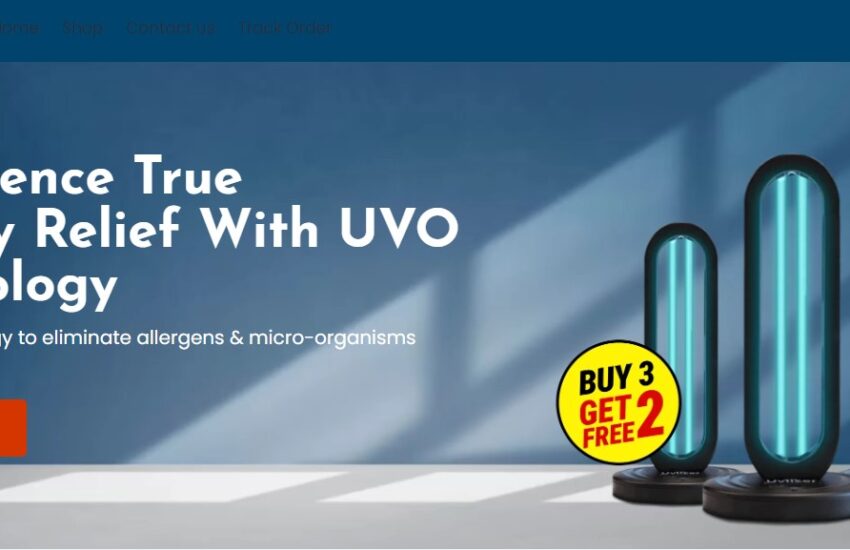The Uvlizer lamp claims to disinfect spaces using UV-C light, promising a chemical-free solution to eliminate germs, bacteria, and even mold. But does it live up to these claims? In this comprehensive review, we’ll delve into the product’s features, effectiveness, customer feedback, and more to help you make an informed decision.
What Is the Uvlizer Lamp?
The Uvlizer lamp is marketed as a UV-C light sanitizer designed for home use. It purportedly kills 99.9% of germs, bacteria, and viruses, offering a safe and efficient way to disinfect rooms without chemicals. The device typically comes with a remote control and multiple timer settings for user convenience.
Claimed Features
-
99.9% Germ Elimination: Targets bacteria, viruses, and other pathogens.
-
38W UV-C Light: Utilizes ultraviolet light for disinfection.
-
Remote Control: Allows for easy operation from a distance.
-
Multiple Timer Settings: Offers flexibility in disinfection duration.
Effectiveness of UV-C Light
UV-C light is known for its germicidal properties, commonly used in hospitals and laboratories. However, its effectiveness depends on several factors:
-
Exposure Time: Adequate exposure is necessary to inactivate pathogens.
-
Distance: The closer the light source to the surface, the more effective it is.
-
Line of Sight: UV-C light cannot penetrate through objects; shadows can hinder effectiveness.
According to the EPA, while UV-C light can destroy some molds and bacteria, its effectiveness in typical home settings is limited due to these factors.
Uvlizer Reviews: What Are Customers Saying?
Customer experiences with the Uvlizer lamp are mixed:
-
Positive Feedback: Some users report satisfaction with the product’s performance in small areas.
-
Negative Feedback: Others have encountered issues such as malfunctioning units, poor customer service, and unfulfilled return policies.
It’s important to note that some online reviews may be fabricated, making it challenging to gauge the product’s true effectiveness.
Pricing and Availability
The Uvlizer lamp is available through various online retailers:
-
Amazon: Priced around $109.95.
-
eBay: Prices vary, with some listings as low as $20.
-
Official Website: Offers the product with potential discounts and promotions.
When considering a purchase, it’s advisable to compare prices and check for seller credibility.
Safety Considerations
While UV-C light is effective in killing pathogens, it poses safety risks:
-
Skin and Eye Damage: Direct exposure can cause burns and eye injuries.
-
Material Degradation: Prolonged exposure can degrade certain materials.
Precautions:
-
Avoid direct exposure to skin and eyes.
-
Ensure the room is unoccupied during operation.
-
Follow manufacturer guidelines strictly.
Alternatives to Consider
If you’re seeking effective disinfection methods, consider the following alternatives:
-
HEPA is Efficient in removing airborne particles and pathogens.
-
Chemical Disinfectants: Proven to kill a wide range of germs on surfaces.
-
Professional Cleaning Services: Offer thorough disinfection, especially in larger spaces.
These alternatives may provide more reliable and safer options for maintaining a clean environment.
FAQs
Q: What are the disadvantages of UV disinfection?
A: UV disinfection can be ineffective if not used properly. It requires direct exposure to pathogens, and its efficacy diminishes with distance and obstructions. Additionally, UV-C light can be harmful to skin and eyes.
Q: What is a Uvlizer used for?
A: The Uvlizer is intended for disinfecting rooms and surfaces using UV-C light, aiming to eliminate germs without chemicals.
Q: Does the Uvlizer work on mold?
A: UV-C light can kill mold spores on surfaces with direct exposure. However, its effectiveness against mold in typical home settings is limited.
Final Verdict
The Uvlizer lamp offers a chemical-free approach to disinfection using UV-C light. While the concept is scientifically sound, the product’s effectiveness in real-world home settings is questionable due to limitations in UV-C light application and safety concerns. Potential buyers should weigh these factors carefully and consider alternative disinfection methods that may offer more reliable results.

